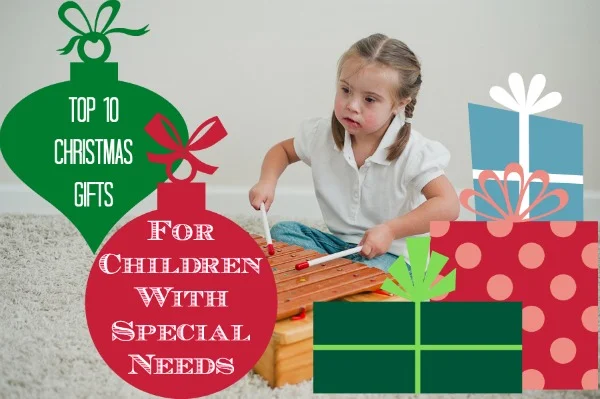
BLOGS
Educational blogs for parents and professionals
Release, Reflect, Repeat: The Power of Embracing Tears Without Apology
Why is it common for people to apologize when they cry or express emotions? Over my two decades of experience as a therapist, I've consistently encouraged clients to embrace and freely express their emotions, fostering an environment free from shame and judgment to help promote healing and wellness.
Crying is a natural and healthy emotional response to various situations in life. Whether it's sadness, frustration, joy, or even relief, shedding tears is a fundamental aspect of being human. However, many of us have been conditioned to apologize for crying, as if it's something to be ashamed of or a sign of weakness. In reality, crying is a powerful tool for processing emotions and promoting mental wellness. I wholeheartedly welcome tears, imagining them as a means to release and let go of things as they gently stream down my face.
Here's why we shouldn't feel the need to say sorry when tears start flowing, and why embracing our emotions is crucial for overall well-being.
Validating Your Feelings
When you apologize for crying, you're essentially dismissing the validity of your emotions. It sends the message that expressing vulnerability is wrong or unwelcome. Instead, I encourage clients to acknowledge and honor their feelings, recognizing that they are a natural part of the human experience. Whether you're crying out of sadness, frustration, or even happiness, your emotions are valid and deserve to be acknowledged without judgment.
Release and Relief
Crying serves as a release valve for pent-up emotions. Holding back tears can lead to increased stress and tension, whereas allowing yourself to cry can provide a sense of relief and catharsis. Tears contain stress hormones, so shedding them can actually help reduce feelings of anxiety and promote a sense of emotional balance. By embracing your tears, you're giving yourself permission to let go of negative energy and make space for healing. We take in so much on a daily basis but spend very little time letting the energy or feelings go.
Building Emotional Resilience
Contrary to popular belief, showing vulnerability is a sign of strength and courage, not weakness. Check out Dr. Brene Brown’s TED Talk on vulnerability. By allowing yourself to cry without apologizing, you're demonstrating courage and authenticity. This willingness to be emotionally honest fosters deeper connections with others and cultivates resilience in the face of adversity. It takes courage to confront your emotions head-on, and by embracing your tears, you're taking an important step towards building emotional resilience and providing a positive role model for others struggling with letting go of various emotions.
Promoting Well-Being
Suppressing emotions can have detrimental effects on your mental health. Research has shown that allowing yourself to experience and express your feelings is essential for overall well-being. Crying can help regulate mood, reduce stress, and enhance emotional clarity. By refraining from apologizing for your tears, you're prioritizing your mental wellness and embracing a more compassionate attitude towards yourself.
Encouraging Authenticity
When we apologize for crying, we're essentially hiding our true selves and putting up a facade of strength. However, true strength lies in authenticity and vulnerability. By embracing your tears and refusing to apologize for them, you're embracing your authentic self and inviting others to do the same. This fosters deeper connections and creates a supportive environment where everyone feels free to express themselves without fear of judgment or shame.
Crying is a natural and essential part of being a human. Be careful when you are connecting with someone who is expressing their emotions through tears. I encourage you to be more supportive of their courage to be authentic and let go of the energy and sadness that they have been carrying. On the other hand, rather than apologizing for shedding tears, we should embrace our emotions and allow ourselves to experience them fully and freely. By doing so, we validate our feelings, promote mental wellness, and cultivate deeper connections with others. So the next time tears start to flow, remember that it's okay not to say sorry. Instead, allow yourself to cry freely and honor the beauty of your emotional experience. If others are uncomfortable with your tears or sadness, that's on them not you!
If you or someone you know is struggling with mental health challenges we are here to support.
We offer a free 15-minute consultation Click here to schedule your FREE 15-minute consultation.
We look forward to supporting you and you are not alone!
Music Therapy Addressing Back to School Needs
September and October can be very challenging months for both parents and children transitioning back to school from a relaxing and non-structured summer. Going back onto a routine can be tough for both parents and their children.
Once school starts, most teachers will be very attuned to each child's needs in their classroom. Perhaps you've gotten a call to have your child taken from class because of your child's performance, behaviors or even social isolation? If this happens, it can make the transition even more stressful for both the parent and the child.
Parents then might try to find services that will support their child and address the concerns of their teachers. What kinds of therapy might help? occupational therapy? speech and language therapy? physical therapy?
What about music therapy? Maybe you've never even considered it. This form of therapy has been around for almost 80 years, yet surprisingly people are still unaware of its effectiveness, particularly for helping children with special needs.
The fascinating aspect of music therapy is that you can be working on multiple goals simultaneously, such as speech/communication, fine/gross motor, social skills, emotional regulation, and others. For example, when playing a drum, a child can work on their gross motor skills, and at the same time be learning to regulate by maintaining a steady rhythm. If you add in vocalizations, it can help them with communication. Very few forms of therapy can compare to the versatility and efficacy of music therapy.
Here are a few examples of why music therapy can be an effective therapy for your child to help with any of the goals and concerns that may arise during this hectic transition starting back to school.
1- Music can increase social skills
2- Music can help regulate your child
3- Music can increase your child's attention span/focus
4- Music strengthens your child's auditory skills
5- Music helps with memory and sequencing skills
6- Music is fun, engaging and rewarding
7- Music can help increase communication skills and language development
8- Music can help with understanding and processing children's feelings
9- Music can help with social-emotional development
10- Music can help with fine and gross motor skills
If you would like to learn more about music therapy please contact me: john@mewsicmoves.com
Let's Stay in Touch!
For FREE songs, videos and tips on how to support children with special needs through music click here.
Please share, like and leave your comments below as I love to hear from you.
5 Main Benefits of Drumming for Children With Special Needs
Does your child have challenges with speech and articulation? Eye-hand coordination? Or even having difficulty with social skills or social cues? Then drumming maybe the right tool for your child to overcome and build on some of these challenges.
There has been a lot of research on the benefits of drumming over the past few decades. Drumming has been shown to help reduce depressions, boost immune systems and build self-esteem. In this blog I want to focus on five main benefits of drumming for children with speical needs.
1. Increase Communication and Speech
Drums can reinforce speech, vocalizations, sounds and even help with sentence building. You can use drumming to reinforce word syllables and then expand to full sentences. Have the child sound out each syllable or word as they simultaneously play it on the drum.
2. Support Eye-Hand Coordination/Motor Skills
Drumming can help strengthen upper body control, arm movement and increase eye-hand coordination, particularly if you use more than one drum. Drumming with mallets helps with reaching, grasping, fluidity of movement and fine motor skills.
3. Develop Social Skills
Groups drumming, with the proper facilitation, is a powerful exercise for people of all ages to strengthen social skills. Group drumming teaches children to listen, pay attention, turn-taking, sharing, and taking cues from one another.
4. Support Emotional Needs/Impulse Control
Drumming can help a child learn to regulate their emotions. It can be very useful for expressing emotions and to "get it out." Drumming can vent aggressions, and invite in a calmer state of mind, particularly improve impulse control.
5. Improve Self-Esteem and Fun!
Drumming is catchy and can be a lot of fun. If you have ever been in a drumming group you can surely attest to this. Drumming is a great way for children with special needs to play and to get physical exercise.
Drumming combines motor movement with auditory and visual feedback, which makes it a great tool for strengthening a variety of skills for children with special needs. Since drumming is multi-sensory, it facilitates greater engagement, encourages learning, brain function, and skill building all while having fun! I have seen drumming to be very effective for my clients. I hope you'll give it a try!
To get you started, I wrote a song that helps facilitate a fun drumming experience while working on various skills mentioned above. To download the full song, click on the image to the right, check it out and let me know what you think. Happy drumming!
You can also view my youtube video on how to make your own rhythm sticks! Click Here To View
For FREE songs, videos and tips on how to support children with special needs through music click here.
LET'S STAY IN TOUCH !
Please leave your comments below as we'd love to hear from you.
Top 10 Christmas Gifts For Children With Special Needs
At this time of year, parents often ask for Christmas gift suggestions for their child with special needs. For these parents, it can be quite challenging to find the right gift - a gift that is fun, not over-stimulating, and has some therapeutic value.
So in time for the holidays season, I have created a top-10 list of my current favorites. I have also included its potential therapeutic value under each link so you can see which gift would be best suited for your child. (Click on each item to view its description)
1. Sounds Shapes
- Gross motor skills
- Impulse control
- Sensory input
2. Cabasa
- Fine motor skills
- Stimulation and sensory needs
3. Ocean Drum
- Relaxation
- Sensory needs
- Impulse control
4. Melodica
- Fine motor skills
- Oral and breath control
- Eye-hand coordination
5. Ukulele
- Fine motor skills
- Eye-hand coordination
- Gross motor skills
6. Kazoo
- Oral motor skills
- Breath control
7. Legos
- Fine motor skills
- Joint attention skills
- Task focus
- Sharing
- Turn-taking skills
- Problem-solving skills
8. Eggspressions
- Social skills
- Emotional awareness
- Emotional Development
9. Trampoline
- Sensory input/needs
- Gross motor skills
- Balance/coordination skills
10. Dizzy Disc
- Sensory input/needs
- Gross motor skills
- Balance/coordination skills
I hope you discovered something new and useful from this list. If you have any toys that you would like to add to this list, please add it in the comment section below.
Happy Holidays!
John Mews, MA, MTA
For FREE songs, videos and tips on how to support children with music click here.










